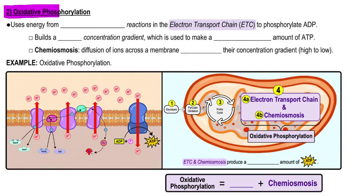Multiple Choice
Most of the ATP produced in cellular respiration comes from which of the following processes?
2584
views
 Verified step by step guidance
Verified step by step guidance



 1:06m
1:06mMaster Types of Phosphorylation with a bite sized video explanation from Bruce Bryan
Start learning